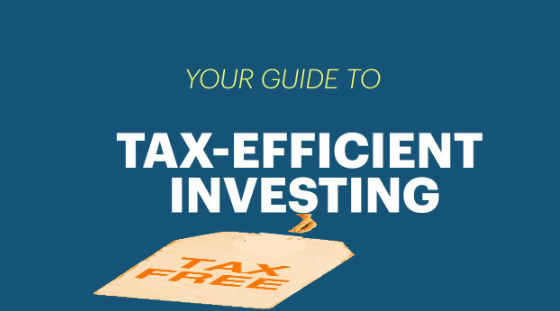Tax-Smart Investing: Unveiling the Power of Section 1031 Exchanges

Investors are always looking for strategies to optimize returns and minimize tax liabilities. Section 1031 exchanges, a powerful tool in the tax-smart investing arsenal, provide a legal means to defer capital gains taxes when selling specific properties. In this article, we delve into the intricacies of Section 1031 exchanges, exploring their benefits, challenges, and strategies for maximizing returns while staying compliant with tax regulations.
Understanding Section 1031 Exchanges
Definition and Purpose
Section 1031 of the Internal Revenue Code allows investors to defer capital gains taxes on selling specific properties by reinvesting the proceeds into like-kind properties. The primary purpose is to promote economic growth by encouraging the continual reinvestment of capital.
Eligible Properties
Not all properties qualify for Section 1031 exchanges. Understanding the eligibility criteria is crucial. Generally, real estate used for business or investment purposes, such as rental properties or commercial real estate, qualifies.
Exchange Process
The exchange process involves the sale of the relinquished property, identifying potential replacement properties, and acquiring one or more replacement properties within specific timelines. Adhering to these timelines is critical for a successful exchange.
Timelines and Regulations
Strict timelines govern Section 1031 exchanges. Investors must identify potential replacement properties within 45 days of selling the relinquished property and complete the acquisition within 180 days. Additionally, there are regulations regarding the value of the replacement property and the use of qualified intermediaries.
3. Benefits of Section 1031 Exchanges
3.1. Tax Deferral
One of the most significant advantages of Section 1031 exchanges is the ability to defer capital gains taxes. By reinvesting the proceeds into like-kind properties, investors can postpone the tax liability until a future sale without immediate out-of-pocket expenses.
3.2. Portfolio Diversification
Section 1031 exchanges enable investors to diversify their portfolios without triggering immediate tax consequences. This flexibility allows for strategic adjustments to investment strategies based on market conditions.
3.3. Wealth Accumulation
With tax deferral, investors can leverage the time value of money. The funds that would have gone to taxes remain invested, potentially compounding and leading to more significant wealth accumulation.
3.4. Flexibility in Investment Strategies
Investors can adapt their investment strategies to meet changing market conditions without the burden of immediate tax consequences. This flexibility enhances the ability to capitalize on emerging opportunities.
Read also Top 10 Companies Offering IT Certifications: A Comprehensive Guide
4. Challenges and Risks
4.1. Strict Regulations
While Section 1031 exchanges offer significant benefits, they have strict regulations that must be followed meticulously. Adherence to these regulations can ensure the disqualification of the exchange and the imposition of taxes.
4.2. Identification Period Constraints
The 45-day identification period can be challenging, especially in competitive real estate markets. Investors must identify suitable replacement properties within this relatively short timeframe, adding pressure to the decision-making process.
4.3. Like-Kind Property Requirement
The definition of “like-kind” properties can be restrictive. Understanding the nuances of this requirement is crucial to ensuring that replacement properties qualify for the exchange.
5. Strategies for Maximizing Section 1031 Benefits
5.1. Professional Guidance
Engaging the services of tax professionals and qualified intermediaries is essential. Their expertise can navigate the complexities of Section 1031 exchanges, ensuring compliance and maximizing the potential benefits.
5.2. Timing and Planning
Strategic timing of property sales and exchanges is crucial. Investors should plan transactions with an eye on market conditions, tax implications, and overall investment objectives.
5.3. Portfolio Optimization
A well-optimized portfolio aligns with an investor’s long-term goals. Section 1031 exchanges allow refining and enhancing a real estate portfolio, contributing to overall financial growth.
5.4. Alternative Investments
Beyond traditional real estate, investors can explore alternative investments that qualify for Section 1031 exchanges. This can include interests in certain partnerships, providing additional avenues for diversification.
7. Conclusion: Leveraging Tax Efficiency for Financial Growth
In conclusion, Section 1031 exchanges provide a powerful avenue for tax-smart investing. By deferring taxes, diversifying portfolios, and strategically navigating the exchange process, investors can optimize their financial growth while remaining compliant with tax regulations.
8. FAQs: Clarifying Common Queries
Q1: Are all types of real estate eligible for Section 1031 exchanges?
A: Not all types qualify. Generally, real estate used for business or investment purposes, such as rental properties or commercial real estate, qualifies.
Q2: What happens if I fail to identify replacement properties within 45 days?
A: Failure to identify replacement properties within the specified period can jeopardize the exchange. It’s crucial to adhere to the timelines to maintain eligibility.
Q3: Can I use Section 1031 exchanges for properties outside the United States?
A: No, Section 1031 exchanges are limited to properties located within the United States.
Q4: How often can I use Section 1031 exchanges?
A: There is no limit on the number of times an investor can use Section 1031 exchanges as long as the transactions meet the criteria set by the IRS.




